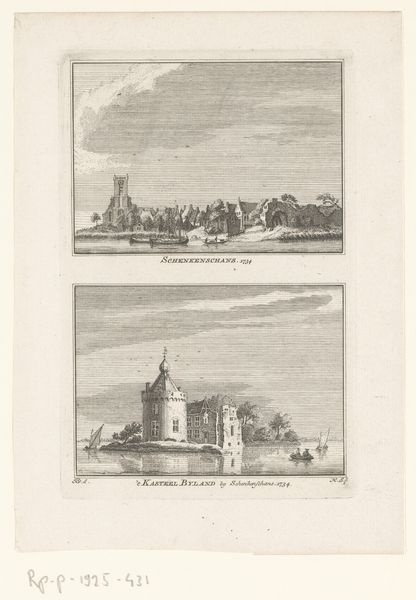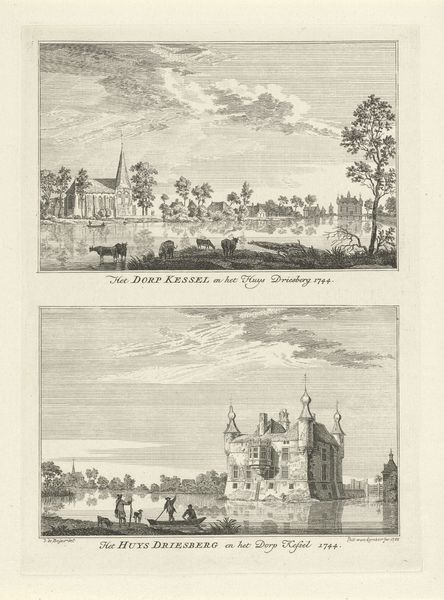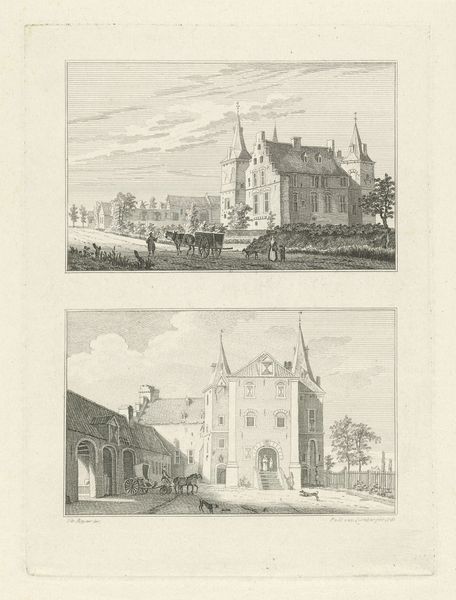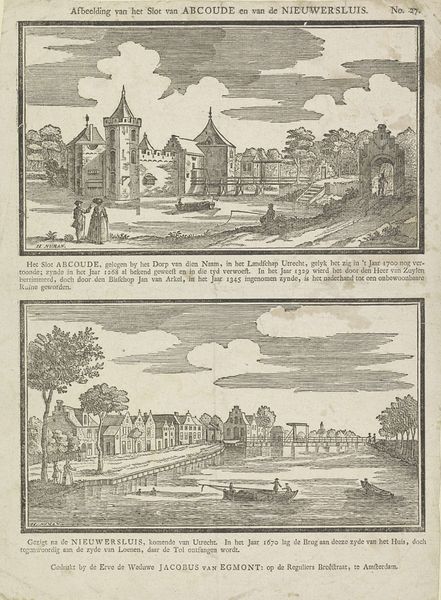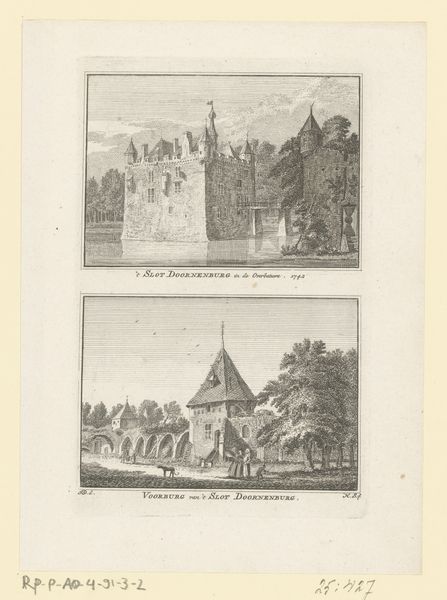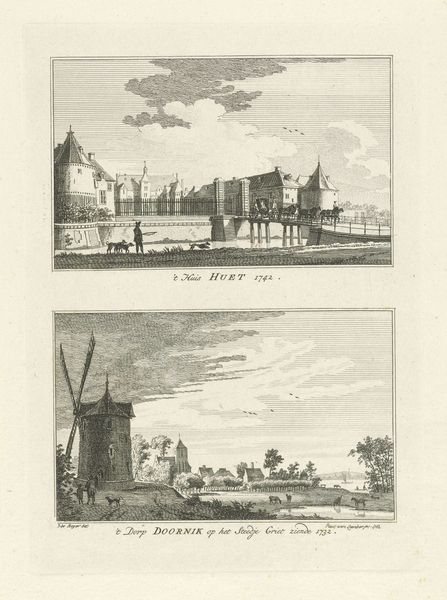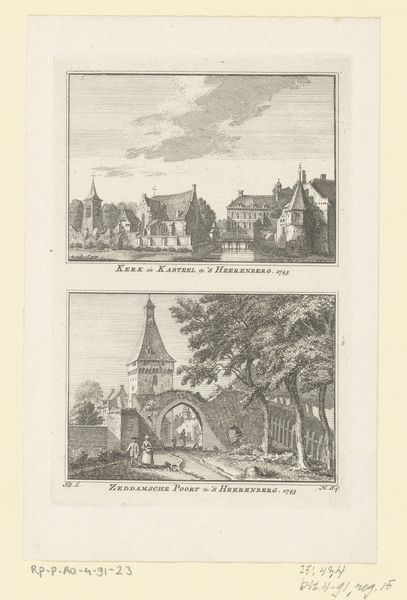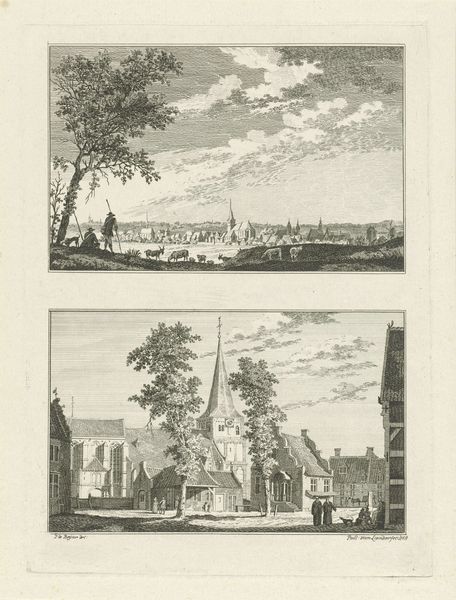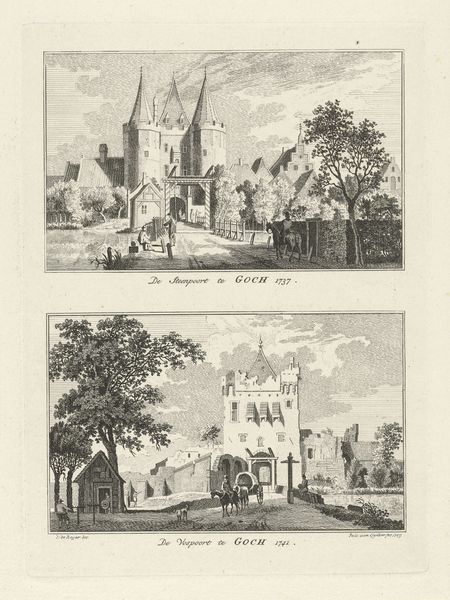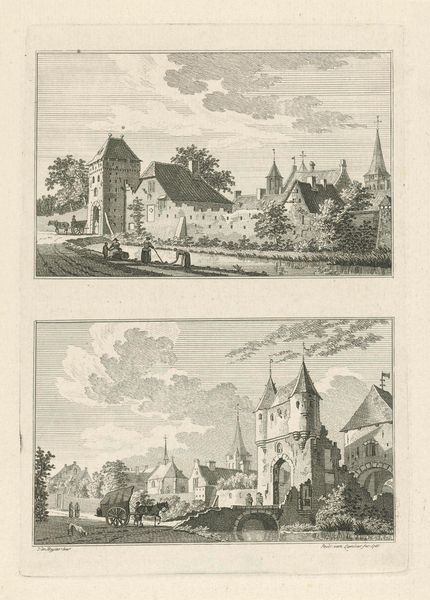
drawing, print, etching, paper, engraving
#
drawing
#
dutch-golden-age
# print
#
etching
#
old engraving style
#
landscape
#
paper
#
form
#
geometric
#
line
#
cityscape
#
engraving
#
realism
Dimensions: height 196 mm, width 142 mm
Copyright: Rijks Museum: Open Domain
Editor: This is "Huis Magerhorst en het dorp Duiven" by Paulus van Liender, made in 1762. It’s an etching and engraving on paper. It’s quite detailed. The neat, linear quality almost makes it feel like a meticulously planned architectural rendering. What story do you think the artist is trying to tell with these paired scenes? Curator: That linear precision is something, isn't it? Like the artist is trying to capture not just the image, but the very essence of a place, holding it still. For me, it whispers of the Dutch Golden Age's obsession with order and clarity, doesn’t it? Van Liender has presented these contrasting yet complementary views – a manor house, symbolising wealth and status, alongside the humble village it likely oversees. And the little figures included – just enough suggestion of humanity to create the connection. What catches your eye most between the two? Editor: I like that we see the manor from a closer vantage and the town from farther away. It changes how I perceive space, scale, and how the artist uses distance to convey a relationship between power and the everyday. It makes me consider the viewpoint that's imposed upon the viewer. What feeling do you get from it? Curator: Yes! The composition subtly places us, the viewers, within a social hierarchy, doesn’t it? And you know, it's interesting – even though it's an engraving, there’s this subtle emotional pull towards the pastoral tranquility of the village scene below, a quiet nod, perhaps, to the inherent beauty in simplicity and a gently fading rural way of life. Editor: I hadn't considered that. It really adds another layer to think about how even a simple depiction of landscape can have complex ideas woven in. Thank you! Curator: It’s a real pleasure. You’ve brought a vibrant interpretation to this already lovely work!
Comments
No comments
Be the first to comment and join the conversation on the ultimate creative platform.
